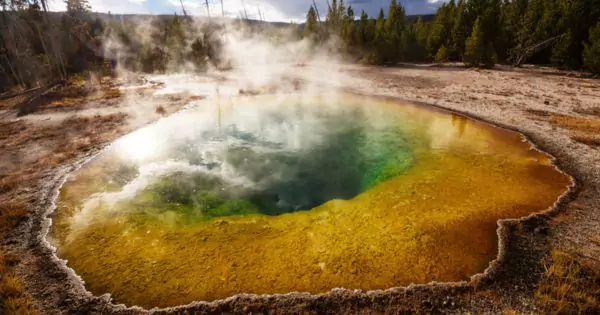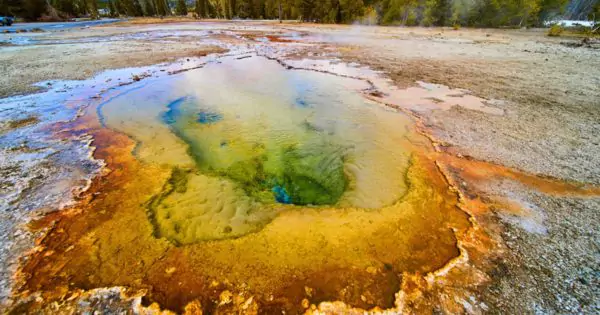
Yellowstone National Park, renowned for its stunning natural beauty, also harbors hidden dangers, particularly its scalding hot springs. This blog post delves into the unfortunate incident where a young man seeking an adventurous dip in these geothermal waters lost his life, serving as a stark reminder of the perils present in this majestic park.
The Allure and Danger of Yellowstone’s Hot Springs
Yellowstone National Park is not only a hub of ecological diversity but also one of the most geothermally active regions in the world. This geothermal activity, while responsible for the park’s famous geysers and hot springs, also poses significant risks to visitors who may underestimate their danger.
The Lethal Beauty of Geothermal Pools
The park’s numerous hot springs are a major draw for visitors, thanks to their stunning, otherworldly colors and the mist that dances over their surfaces. These pools, however, are not benign. Their waters are superheated by the volcanic activity lurking just beneath the Earth’s crust, making them dangerously hot. The allure of these pools can be misleading, leading some visitors to make fatal decisions.

The Incident
The incident involving Colin Scott, a young and adventurous visitor, underscores the treacherous nature of these attractions. Colin was attempting to engage in “hot potting,” a practice where individuals soak in natural hot springs, despite it being illegal and extremely dangerous in the park. Tragically, while assessing a suitable spot for his adventure, he slipped into one of these scalding pools. Rescue efforts were immediately launched, but the extreme conditions hindered their ability to recover him promptly.
What Happened to Colin Scott?
The following day, when rescue teams were able to return to the site, they faced a shocking scene. Instead of finding Colin’s body, they found only his belongings—his wallet and flip-flops—near the edge of the water. The hot spring had completely dissolved his body overnight, a grim testament to the destructive power of these natural features.
The Science Behind the Dissolution
Geothermal activity in Yellowstone can elevate water temperatures to more than 199°F (93°C) at the surface, with deeper waters being even hotter. These temperatures can rapidly break down organic material, including human tissue. Deputy Chief Ranger Lorant Veress explained that the acidic and hot conditions of the spring led to a rapid and complete dissolution of Colin’s body, a rare but not unheard-of occurrence in the park’s history.
Rare Survivors in Hostile Waters
The extreme conditions of Yellowstone’s hot springs allow only specialized organisms to survive. Among these are archaea, a type of extremophile capable of thriving in high temperatures and acidic environments, showcasing the harshness of this ecosystem. These conditions are starkly inhospitable to typical plant and animal life, emphasizing the dangers these springs pose to humans.
Safety in Yellowstone: A Critical Reminder
Colin’s tragic accident is a poignant reminder of the need for vigilance and adherence to safety guidelines while visiting Yellowstone or any natural area with potential hazards. Park officials continuously warn against the dangers of straying from marked paths and disregarding safety signage.
Comparative Dangers: Yellowstone vs. Other National Parks
While Yellowstone has its unique risks associated with geothermal activity, other parks also pose dangers, often related to terrain and wildlife. For example, the Great Smoky Mountains, while lush and teeming with biodiversity, have seen a higher number of fatalities due to their own set of challenges including rough terrain and high visitor numbers.

Conclusion
The beauty of Yellowstone’s geothermal areas is undeniable, but so is their danger. The story of Colin Scott serves as a critical cautionary tale for all park visitors. It highlights the importance of respecting nature’s boundaries and adhering strictly to all safety guidelines. As visitors to such majestic but formidable landscapes, our responsibility is to safeguard ourselves and others by respecting the natural forces at play.
Resources for Safe Travel in Yellowstone
Planning and education are key to a safe visit to Yellowstone or similar environments. Visitors are encouraged to thoroughly review park resources, attend safety briefings, and stay informed about the conditions of the areas they plan to explore. Remember, the best way to enjoy nature’s wonders is to observe them safely and responsibly.